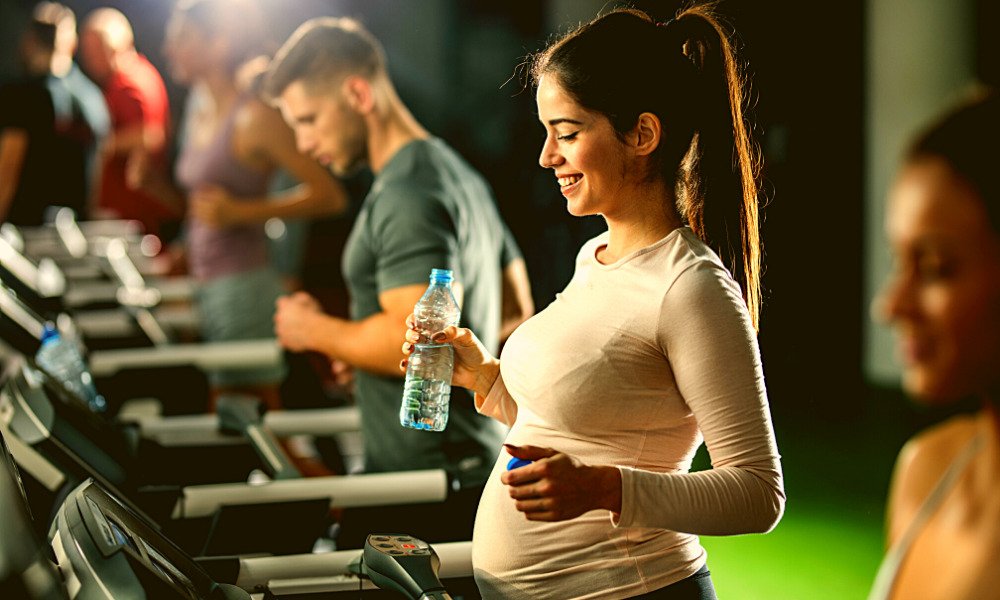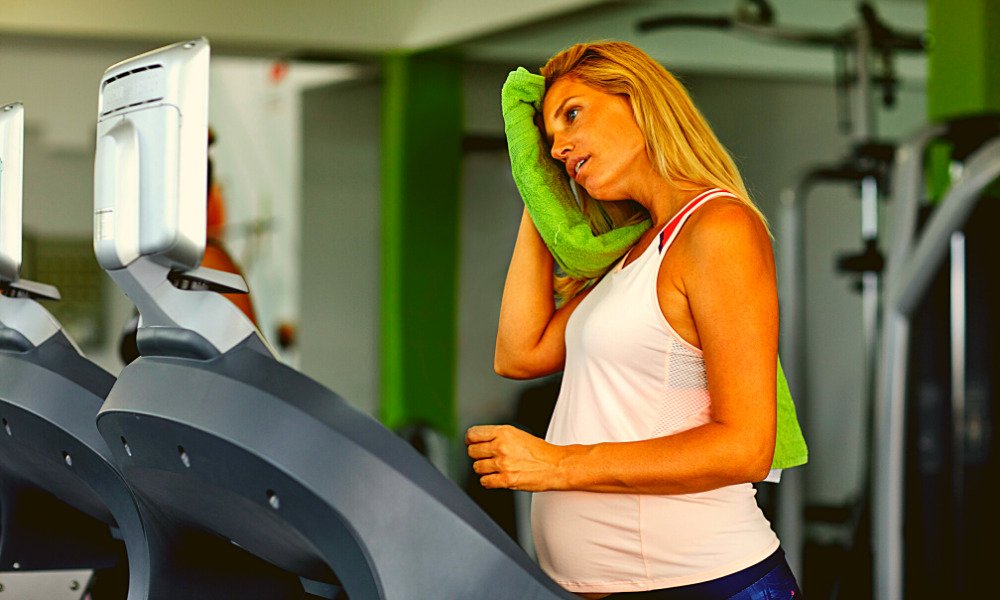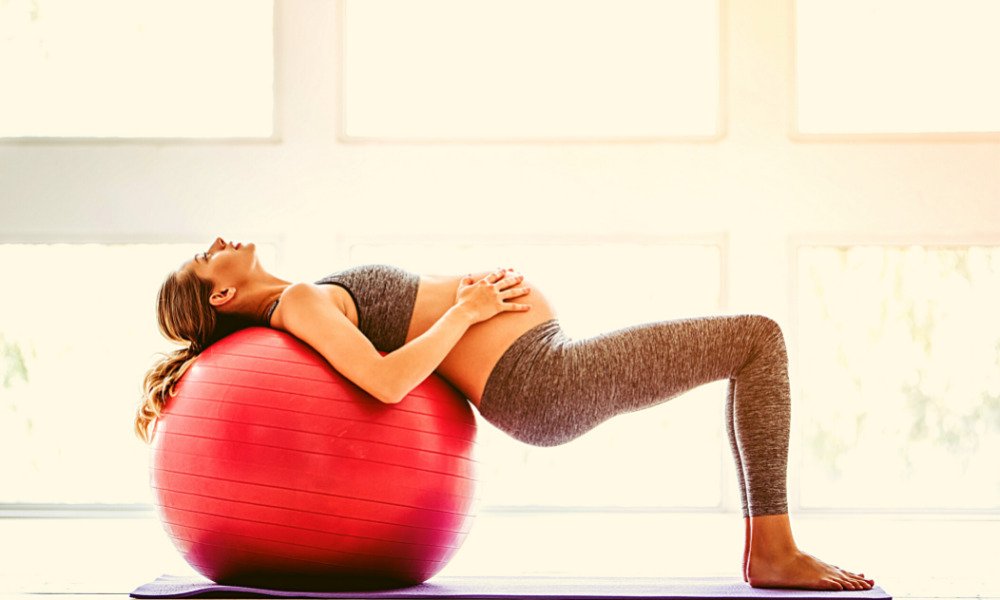Exercising during pregnancy is an excellent idea, as long as you choose suitable types of exercise. Steady walking, swimming, and pregnancy yoga have been known to have many health benefits, both for you and your baby. But, can I walk on a treadmill while pregnant?
To ensure you get the right amount of exercise on your doorstep without the extra effort, it would be a good idea to use a treadmill. However, it’s essential to understand the dos and don’ts of using a treadmill while pregnant.
Read More:
- Best 3 Peloton Elliptical Reviews
- Best 3 Incline Treadmill Reviews
- Sole F85 Treadmill Reviews
- Top 3 Matrix Treadmill Reviews
- Best Elliptical Machines Under $500: Top 5 Options Reviewed
CAN YOU WALK ON A TREADMILL WHILE PREGNANT?

Yes, walking, whether outside or on a treadmill, is a good idea when pregnant as it boosts your mood, helps you lose fat, and helps you sleep a little better, all of which are great for your baby.
It’s recommended that you start with three 15-minute walks per week in the first trimester and build up to a daily walk of 20 – 30 minutes. Most physicians will recommend a total of 150 minutes of walking throughout a 7-day period if possible.
To start your pregnancy workout, you should vary your walking speed between 3-4.5 miles per hour. Any faster could cause your footfalls to become heavier, creating shockwaves that could harm your baby.
THE BENEFITS OF WALKING ON A TREADMILL WHILE PREGNANT
There are several benefits to consistent, light exercise throughout pregnancy, and walking provides the ideal mix of cardio and strength training to keep your body healthy. Read Here: Top 10 Best Treadmills Under $1000
- Sleeping Habits
Some pregnancies can be complicated when it comes to sleeping, especially in the latter stages of pregnancy. It’s hard to get your bump comfortable, and your body temperature is likely to fluctuate excessively.
Walking tires your body out and prepares you for sleep. The more you walk, the faster you’ll be asleep when your head hits the pillow. Your sleeping pattern is good for your baby, too, as your cells repair and develop while you’re sleeping.
- Reduces Anxiety
Being pregnant comes with many natural anxieties; you might be concerned with your baby’s health, worrying about the nursery, or thinking about breast versus bottle feeding. All that anxiety can add stress to your body and make it difficult for you to sleep.
Walking releases endorphins which are natural mood boosters. The more we walk, the better we’ll feel. Spending 15 minutes a day on the treadmill will help you to reduce your stress and anxiety and create a smooth pregnancy.
- Reduces Varicose Veins
Varicose veins are created through increased blood pressure causing red blood cell blockages near the skin’s surface. They restrict blood flow and can become quite painful.
Walking naturally reduces your blood pressure through the steady exercise of the heart and allows for better blood flow. This, in turn, can keep you nimbler for longer while pregnant, as you’ll be able to avoid severe joint and muscle pain in your legs from the heavier weight.
- Weight Loss
You will inevitably gain weight during pregnancy. You’re growing an extra person inside you, and that additional person needs feeding too. Read Here: How to Lose Weight on a Treadmill in a Month
However, it can be bad for your baby if you’re overweight, as the fat you carry can prevent your baby from accessing all of the much-needed nutrients from your body correctly.
Walking is a low-intensity form of exercise which helps to shred fat without the excessive effort of going to the gym. Having a treadmill in your own home will allow you to drop those few pounds when you’re feeling up to it – plus, you’ll have more room for those strange cravings.
- Reduces risk of Gestational Diabetes
Gestational diabetes can be pretty common in women that have an underlying health issue before pregnancy. Studies have shown that regular, gentle exercise can reduce the risk of escalated blood pressure and even out blood sugar levels. This allows the pregnancy to commence naturally without the need for excess medication for the mother.
- Cesarean Sections
Focusing on your own health will naturally improve the health of your baby. Ensuring your stay healthy with a good diet and regular exercise will ensure your baby grows to the optimum size for delivery and mirrors your health. This means there’s less risk of an unplanned cesarean on the big day.
- Improves Mood Swings
Research shows that pregnant women who walk for around 30 minutes every day show fewer mood swings and remain more level headed throughout pregnancy. The hormones created through regular exercise help to balance out your emotions – so you’ll hopefully experience fewer tearful days.
- Helps with Back Pain
Regular movement helps to ease back and joint pain. While it’s tempting to sit around, especially as your bump grows, getting your legs moving and doing some gentle exercise will actually ease your aches and pains. Read Here: 6 Best Home Remedies To Relieve Sore Muscles Immediately
- Relieves Constipation
Constipation is a common problem during pregnancy and can be difficult to overcome without the aid of medication. However, regular gentle exercise can help to loosen your bowels slightly and remove the problem.
Read More:
- Best 3 Peloton Elliptical Reviews
- Best 3 Incline Treadmill Reviews
- Sole F85 Treadmill Reviews
- Top 3 Matrix Treadmill Reviews
- Best Elliptical Machines Under $500: Top 5 Options Reviewed
The Potential Dangers of Walking on a Treadmill While Pregnant

- Dehydration
As with any form of exercise, you need to be really careful with your hydration levels. It’s crucial to hydrate regularly during pregnancy, especially during the first trimester when you’re likely to experience more morning sickness.
Because of this, 15 – 30 minutes is the maximum that you should walk on your treadmill in one session, and you should always have water available to sip.
- Over Exercising
While walking on a treadmill doesn’t seem too strenuous, it can tire you out quickly if you’re pregnant, especially in the later stages of pregnancy when walking becomes more difficult anyway. Make sure you take regular rest breaks to combat exhaustion, and if it’s hurting your back or hips, stop. Don’t feel like you need to continue to hit a target. If you’re exhausted, your body will take all of your nutrients for itself, leaving your baby without.
- Falls
Naturally, when you’re pregnant, your center of gravity changes a little. You’re suddenly much heavier at the front, so you might be prone to fall forward.
Take walking steadily, putting your heel down first, and make sure that you’re not too close to the head of the treadmill. Equally, walking on an incline that’s too steep could cause you to fall back, too, if you haven’t maintained the correct balance.
Can You Use a Treadmill Within The First Trimester?
Yes, you can! It’s a good idea to start off walking using your everyday walking habits during the first trimester. You’ll likely feel a little sluggish, and adding extra exercise might be exhausting.
Start at a slow pace and develop a steady, routine walk of no faster than 4.5 mph. As you start to get more into your exercise routine, you’ll be able to upgrade to a slight incline (no more than a level 8 incline). This will intensify your workout without putting too much strain on your body.
When you’re walking, always ensure that you place your heels down first and roll your foot onto your toes. Never walk flat-footed as this increases the vibration through your legs that carries further up your body.
This could disturb your womb, especially during the first trimester, which is the most crucial for healthy development and avoidance of miscarriage.
What About Using A Treadmill Within The Second Trimester

You’ll likely have a little more energy in your second trimester and will want to go for longer walks. Keep to the same speed on your treadmill, but perhaps extend your walking time and increase your incline slightly.
Although you feel like you have a little more energy, you’re likely to be a little heavier – physically – as your baby starts to grow and your bump starts showing. Read Here: Best Massage Chair Reviews And Buying Guide
Don’t be tempted to overdo it just because you’ve got that newfound energy. Heavy running can still cause some damage, so stick to walking at a steady pace.
You may need to use your arms to give you a little more balance at this point rather than holding on to the treadmill handles, as this will provide you with more balance, so be careful of your speed.
Read More:
- Best 3 Peloton Elliptical Reviews
- Best 3 Incline Treadmill Reviews
- Sole F85 Treadmill Reviews
- Top 3 Matrix Treadmill Reviews
- Best Elliptical Machines Under $500: Top 5 Options Reviewed
Can Walking on a Treadmill Cause Miscarriage?
Typically, no. There are certain things that you’ll need to watch out for as a result of walking on a treadmill, such as dehydration, falls, or overexertion.
These things, if taken to extremes, could eventually result in a miscarriage. However, walking itself isn’t the problem here. As long as you’re mindful of how you feel while you’re on the treadmill and don’t do too much, you should be completely fine.
The important things to remember are:
- Always carry water with you while you’re walking.
- Don’t stand too close to the front of the treadmill.
- Don’t walk on an incline if you’re feeling too much strain on your hips or back.
- Always warm up – never start your workout on an incline; start flat and introduce it steadily.
- Make sure you do a cool-down exercise before you stop your walk. If you’re out walking, you’ll gradually slow down before coming to a complete stop. Mimic this on your treadmill, and it’ll help your body adapt and mean that you’ll be able to keep your balance more easily.
Is it Safe to Walk at an Incline While Pregnant?
It is safe to walk at an incline during pregnancy; however, that doesn’t necessarily mean that you’ll always do that.
- First Trimester
During your first trimester, you’ll be lower on energy, and you may find that the extra effort that it takes to walk at an incline just tires you out too much. If this is the case, remain walking on a level footing.
- Second Trimester
Once your second trimester hits, you’ll probably gain a little more energy. At this point, incline walking won’t seem like such a giant hurdle, and it’ll help you keep the baby fat off and reduce your blood pressure.
- Third trimester
By the third trimester, your baby bump might be a little too large to attempt intense incline walking. Although it’s not dangerous to your baby to attempt walking at an incline on a treadmill, it may cause excess back and hip pain which you could really do without.
Walking at an incline or on uneven surfaces could tire you out quickly in the final stages of pregnancy, so it’s best to stick to treadmill walking on a flat belt.
How Else Can I Lose Fat While Pregnant?

Obesity during pregnancy is a massive health risk. It increases your blood pressure, puts more strain on your organs, may lead to gestational diabetes, and could even cause a miscarriage or excessive bleeding, or rupture during the delivery.
To combat this, most low-impact sports and exercises are considered safe while pregnant. Walking and swimming are the best exercises to get a full-body workout while not having to put your body through too much. You could also try dancing or other non-contact sports.
It’s not advisable to continue jogging or running throughout pregnancy. While the movements are essentially the same as walking, the cardiovascular strain is much more intense, and the harder you run, the heavier your weight will be on the floor.
The heavy footfalls can cause shockwaves that might upset your baby, and after a few months, when your bump starts to grow, you may find running just too tiring.
Avoid any contact sports such as football or baseball, but sports where you’re unlikely to bump into anyone accidentally may be okay to try out – badminton or golf, for example.
Read More:
- Best 3 Peloton Elliptical Reviews
- Best 3 Incline Treadmill Reviews
- Sole F85 Treadmill Reviews
- Top 3 Matrix Treadmill Reviews
- Best Elliptical Machines Under $500: Top 5 Options Reviewed
Summary
Buying a treadmill for home use while you’re pregnant is an excellent idea. It’ll motivate you to keep up a steady exercise regime in your own home during pregnancy, which removes the effort of going to the gym. Walking at a steady pace has many benefits for pregnant women and can ensure that they have an easier delivery and healthier baby.
However, it’s important to look into what you can and can’t do, know your limits, and recognize when you’ve done enough. Over-exercising can also have severe health implications.
